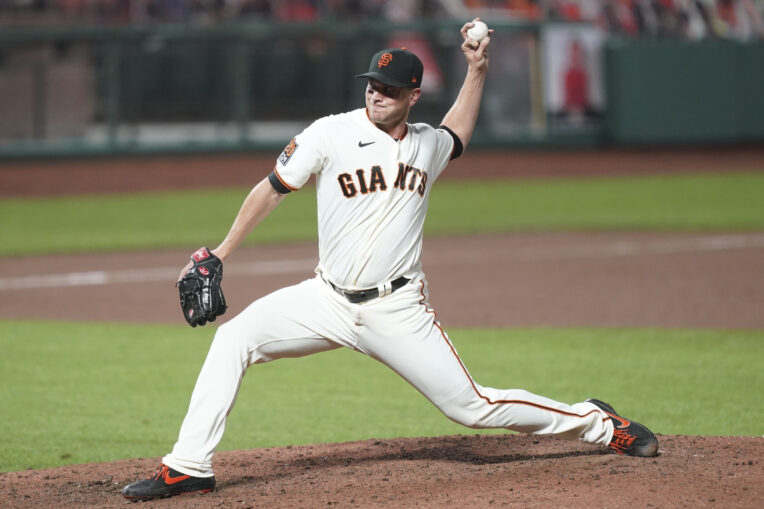
Credit: Cody Glenn-USA TODAY Sports
In less than a month, the New York Mets will officially open their spring training facility in Port St. Lucie and will begin preparing for the 2021 campaign. However, they still need to make a few more moves this offseason before they take the field next month.
As of right now, the front office still needs to acquire a starting center fielder, another reliable infielder, and possibly another impact starting pitcher. While they’ve already brought in reliever Trevor May, who’s expected to be utilized in high-leverage situations, it’d also make plenty of sense to add one more relief pitcher to the bullpen, particularly a left-hander.
Considering the Mets currently have just two lefty relievers (Stephen Tarpley and Daniel Zamora) on their 40-man roster, they’d be foolish not to search for another arm before this winter concludes, especially since neither of these pitchers is expected to throw late in games. With that in mind, it’ll be extremely important for management to bring in a shutdown lefty who’s capable of performing in high-pressure affairs.
While team president Sandy Alderson and his staff pushed hard for reliever Brad Hand, who would’ve been a perfect fit for this team, they fell a little short in their pursuit and lost out on him to the Washington Nationals. Though it always hurts to lose to a division rival, especially when it comes to free agency, there are still plenty of options available on the free-agent market that could prove to be extremely useful next season.
If New York wants to bring back a familiar face, they could attempt to re-sign Justin Wilson, who produced a 3.66 ERA, 3.04 FIP, and a 4.14 xFIP over his 19 2/3 innings in 2020. But since the 33-year-old is likely considered the top left-handed reliever remaining in free agency, there’s a very strong chance he’ll receive a raise from last season’s salary ($5 million), which could motivate Alderson to look elsewhere.
With the Mets attempting to acquire pitcher Trevor Bauer, if they’re able to accomplish that feat and bring him to Queens, they’ll probably need to save some money on their other remaining needs. As a result, it’d be wise to sign an inexpensive reliever like Tony Watson, who made a base salary of just $3 million last season.

Credit: Kyle Terada-USA TODAY Sports
After serving as a part-time closer for the Pittsburgh Pirates from 2013-2017, Watson signed as a free agent with the San Francisco Giants in 2018 and instantly became an option at the backend of their bullpen, as he created 67 holds and a pair of saves over the next three seasons. While his closing days are likely behind him – he’s blown seven saves since 2018 – the 35-year-old could still serve as a quality arm for the Mets in 2021, especially since he’s been successful against both lefties and righties over the last three campaigns.
Since the 2018 campaign, the 6′ 3″ hurler has faced 208 left-handed hitters, producing a 3.56 ERA, 2.97 FIP, 2.87 xFIP, 1.27 WHIP, 23.6% strikeout rate, 4.8% walk rate, 25.5% LD rate, 56.0% GB rate, 18.4% FB rate, 15.4% HR/FB rate and a 34.7% hard-hit rate. In addition, he’s also allowed just a .267 AVG, a .377 SLG and a .297 wOBA against him.
As for right-handers, the former ninth-round pick has faced 357 of them since 2018, generating a 3.00 ERA, 3.97 FIP, 4.49 xFIP, 1.01 WHIP, 22.1% strikeout rate, 5.3% walk rate, 18.6% LD rate, 37.9% GB rate, 43.5% FB rate, 10.9% HR/FB rate and a 30.7% hard-hit rate. Additionally, he’s allowed only a .218 AVG, a .376 SLG, and a .272 wOBA against him.
With the unpopular three-batter minimum rule slated to return in 2021, which seems to be another mistake made by MLB, Watson’s ability to perform effectively against both righties and lefties could make him an extremely valuable weapon for the Mets’ bullpen in 2021. That being said, it’ll be crucial for him to experience an uninterrupted spring training this time around or he could endure similar velocity issues as he did last season.
Despite suffering shoulder fatigue shortly after arriving at camp in 2020, the 2014 All-Star was nearly ready to make his spring debut and then everything got shut down due to the COVID-19 pandemic. While the extended time off provided him with some additional recovery time, the two-week spring training 2.0 period likely didn’t allow him to build up enough strength before the regular season opened.
Due to this issue, Watson’s sinker averaged just 89.5 mph in 2020, which was pretty alarming considering it had previously averaged 93.0 mph in 2019. Coming in at below 90 mph, opposing hitters didn’t have any issues creating a ton of hard contact against it, as his sinking fastball allowed a 47.4% hard-hit rate and a 10.5% barrel rate.
But if the Nebraska-Lincoln product can avoid any significant arm injuries moving forward, then he should be able to increase the velocity on his sinker back up to the mid-90s, which would allow him to generate even more ground balls and reduce the amount of hard contact it surrenders.
Similar to his sinking fastball, Watson’s changeup – his primary pitch in 2020 – also sustained a minor decline in velocity last season, as it dropped down from 86.1 mph in 2019 to 83.9 mph in 2020. That being said, it was still able to generate plenty of horizontal movement, resulting in the third-highest average inches of break (18.9 inches) among all qualified pitchers.
Even though his offspeed offering induced an increased number of walks (walk rate increased by 8.8%) and didn’t create as many strikeouts (strikeout rate declined by 10.0%) last season, its incredible movement and spin – it finished tied with the third-highest active spin percentage (98%) – allowed it to create a 50% GB rate (8.8% higher than 2019).
While there are a few question marks surrounding Watson, and rightly so given his age, all signs are pointing to this season’s spring training starting on time and operating without a work stoppage midway through. If that actually transpires, then it seems the former Pirate could certainly help complete the Mets’ bullpen in 2021 and he probably won’t cost them anywhere near as much as Hand would have.
Sure, the Iowa native won’t serve as a shutdown closer next season, but there’s no question he could be an under the radar acquisition that ultimately proves to be a steal down the road. While there’d be some risk involved with this option, it’d likely allow the front office to make an additional splash at another position this offseason.
It’s not a perfect solution, but it’s one that definitely improves the Mets’ pitching staff at the backend, which is something management has been striving to achieve ever since the 2020 campaign came to a close several months ago.















